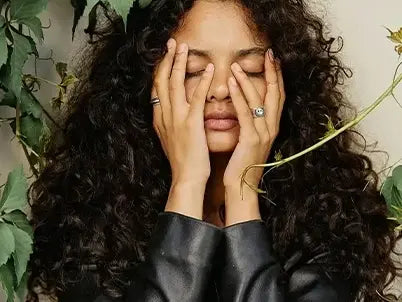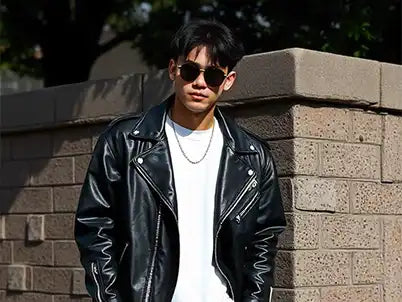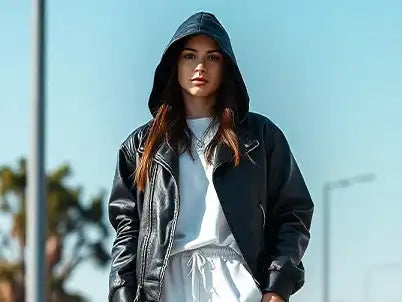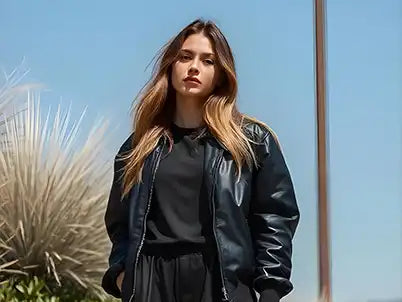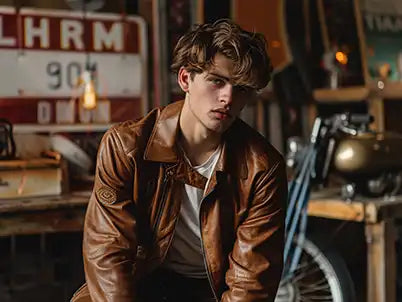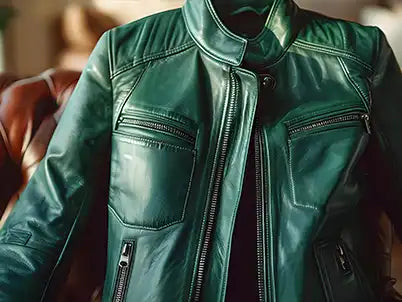Distressed leather is made to appear aged, worn, or vintage. Techniques include scraping, burning, or involving chemicals to create a unique texture. Distressed leather has a timeless character and could sweep the hearts of fashionists and interior designers alike. Understanding this material would compel delving into how it is created, its characteristics, and then the craftsmanship behind its appeal.
This is going to be a comprehensive guide about what distressed leather is and all the efforts put into making it. This guide also includes other elements of the aging art of leather and the utilization of this versatile material in fashion. Keep reading to unwrap all about distressed leather.
How Distressed Leather Made
Creating distressed leather involves a combination of physical manipulation and chemical processes designed to simulate natural aging. The idea is to give an old, rugged look to the leather without taking away from the strength and quality. Below are the common techniques employed by artisans to carry out the distressed look peculiar to leather products.

Scraping and Rubbing
Scraping or rubbing with the aid of abrasives is considered to be one of the most basic means of distressing leather. A fine use of sandpaper, a wire brush, or even steel wool rubs away the top surface of the leather layer. This kind of treatment only exposes just enough surface to reveal lighter tones underneath and thus contrast and character. Rubbing also creates wear patterns in places of friction, such as shoulders and elbows.
Singeing or Flame Treatment
Controlled heat or flame treatment to age leather is termed singeing. In this technique, the leather is lightly passed within an open flame or heated tools to take on some degree of charred or scorched appearance. Darkened rustic patches are created on the surface, thereby increasing the age appeal. This way, the material assumes an authentic, antique look that goes with the textured feel of the distressed brown leather complement.
Chemical Treatments
In this way, artisans apply special solutions to leather that would create color, texture, and finish changes. Often natural oils, dyes, and acids generate a weathered look without compromising the leather's strength. That is a current way of producing high-end leather jackets with a certain finish for aesthetic consistency.
Soaking and Drying
Soaking leather in water, then pressing or drying it in a specific shape or setting, could result in more distress. This technique is particularly effective in creating wrinkles, creases, and natural folds. A typical feature of drying leather is that it contracts and hardens slightly. Some artisans follow soaking with bending or stretching the leather to add more authentic wear lines, especially when crafting a distressed cafe racer jacket.
Waxing and Buffing
Apart from distressing, many artisans go ahead and lay a wax coat to seal the surface. Then they proceed to buff or polish some parts to achieve an exquisite two-tone look. This technique is often used in a high-quality distressed leather trench coat, where the contrast in textures helps elevate the overall design.
Types of Distressed Leather

Here are some of the main types of distressed leather:
- Full Grain Distressed Leather: Made from the finest leather that is durable and has a natural appearance.
- Pull-Up Distressed Leather: It darkens when scratched or under stress, thus making it appear natural and aged.
- Waxed Distressed Leather: Waxed leather with a layer of wax, which adds to its beauty and protection.
- Suede Distressed Leather: Although suede is soft and textured, distressing it brings depth and character.
- Antique Distressed Leather: This kind is usually pre-treated to look aged over decades, giving it a number of characteristics such as color layering, darkened edges, and artificial cracking.
- Hand Distressed Leather: Its name suggests that this kind of leather is completely distressed by hand. The artisans use innumerable tools and techniques to create a unique finish that has no match on Earth: every piece will tell its own story.
Characteristics of Distressed Leather Fabric

The distressed leather fabric is celebrated for several key attributes:
- Unique Aesthetic: The weathered look adds an antique charm to the products.
- Enhanced Durability: The distressing process usually contributes to strengthening the leather, imparting increased durability.
- Softened Texture: Distressed leather becomes softer with age and more comfortable.
- Color Contrasts: The treatment emphasizes rich hues that also serve as visual interest
Uses of Distressed Leather
Here are some of the common uses of distressed leather:

Fashion Industry
Distressed leather is a staple in fashion, particularly used in the making of leather jackets and coats. A distressed leather jacket offers a rugged, timeless appeal that complements various styles. Designs like the distressed brown biker jacket and distressed bomber jacket have become iconic, blending functionality with fashion.
Interior
Distressed leather accentuates warmth and charm when used on furniture in the interior design realm. Inside a space with chairs, sofas, and ottomans using distressed leather, there is an aura of laid-back elegance that invites comfort and style.
Accessories and Footwear
Distressed leather shows its skills beyond clothing and upholstery in bags, belts, and shoes. Their durability and eclectic charm suit accessories that withstand daily wear and tear but still give a trendy edge.
Difference Between Distressed Leather and Regular Leather

Distressed leather looks worn, rugged, and vintage. It manifests color variation, scuffing, wrinkles, and faded patches. These features are deliberately inflicted upon the leather through such processes as sanding, soaking, or chemical artifacts. On the other hand, regular leather showcases a uniform finish, smooth and even-looking, mostly polished and shiny. Clear with a few imperfections.
Caring for Distressed Leather

Proper care ensures that distressed leather retains its beauty and longevity:
- Regular Cleaning: Once in a while, wipe dust and dirt with a soft, damp cloth.
- Conditioning: Classic care trim rests at conditioning. The stabilizer forms an oil-stuffing grease. Apply this on occasion.
- Avoiding Excess Moisture: Keep the leather dry to prevent damage and mold growth.
FAQs
Is distressed leather durable?
Yes, distressed leather is highly durable, thanks to the distressing process. It is very resistant to scratches, tears, and water.
Is distressed leather more expensive?
Yes, products made of distressed leather may be more expensive than those made from other types of leather or synthetic materials.
Can you waterproof distressed leather?
Distressed leather is generally water-resistant, similar to non-distressed leather. Waterproofing can be enhanced with sprays, waxes, or conditioners.
What does distressed leather look like?
Distressed leather, by contrast, will look aged and weathered, often in a superficial way


